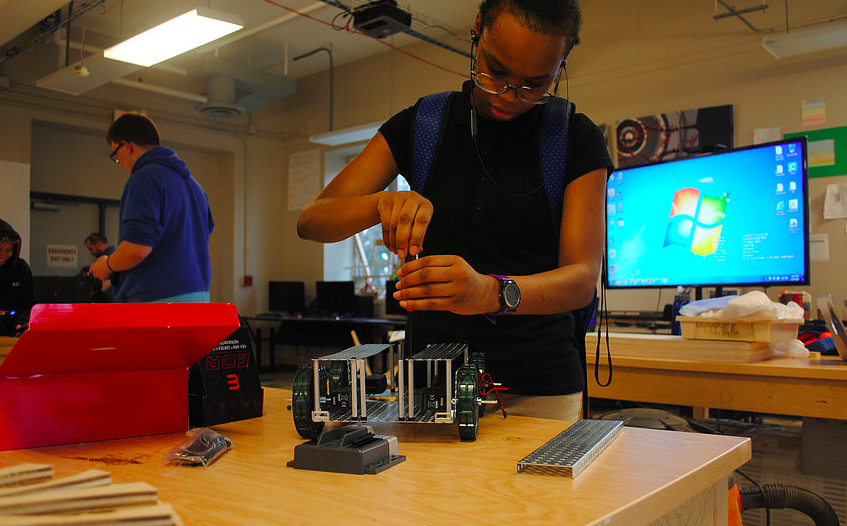Thanks to the persistence of social entrepreneurs across the country, every day we see strategies that are working and delivering results in a rapidly changing world. This Evidence in Action blog series highlights the voices of the more than 70 social innovation organizations that make up the America Forward Coalition, the results-driven solutions our community has to our country’s most pressing social problems, and the evidence-based federal programs that are critical to scaling the impact of this work. Today, America Forward Coalition organization Schools That Can shares about the power of a public-private partnership at MC2 STEM High School.

At Schools That Can, our mission is to work together with teachers and school leaders, education innovators, and industry leaders to help students develop the skills needed to flourish in college, career, and life. So, we’re always asking ourselves: What makes for a life-changing educational experience? How can we engage our community toward the common goal of better preparing the next generation of students for real-world success?
One way we do this is through leveraging technology, coupled with community involvement to make Science, Technology, Engineering, & Math (STEM) hands-on. The combination of innovation and engagement that comes from hands-on projects and community partnerships creates an education that enables students to compete in a global economy and is an investment in the academic, social, and emotional development of students. Of the more than 180 high-performing and high-potential schools within our network, MC2 STEM High School is a tangible example of the strength of rigorous STEM education coupled with community partnerships.
MC2 is Cleveland’s first year-round public high school and the only school in the nation housed at a Fortune 500 company’s headquarters. ·MC2 students, more than 90 percent of whom are African American and from families living at or below the poverty line, outperform local and state-wide peers on the Ohio Graduation Test, with a 98.7 percent pass rate in Reading, 92.3 percent pass rate in Writing, and 89.7 percent pass rate in Math, and 95 percent of MC2 students graduate high school. In 2013, MC2 was recognized by the White House for their innovative practices, as well as by the George Lucas Foundation as a “School that Works.” Students are highly motivated, independent, and seek to develop technologically-driven solutions to problems.
While the positive outcomes are obvious, the evidence that supports MC2’s trans-disciplinary, project-based approach to STEM underscores its value. Instruction centers on cross-disciplinary projects, with students often working in groups that they are tasked with forming themselves. Within these groups–an intense, interactive look at the intricacies of collaboration–each student performs a function that aligns with their interests, skills, needs, or goals. The outcome? This group work is a lens to the way work proceeds in the real world, meaning each student is responsible for the teammates they choose and the result of their work.
Student performance is also prominently linked to community partnerships: Community partners, including local businesses provide tutors, mentors, and experts who enrich teachers’ efforts, making STEM and project-based learning connect to the real world. For example, 10th graders, who take classes on GE campuses, are matched one-on-one with a mentor from GE, and over the course of the semester, they design and create a new GE lighting invention that they present to GE staff members. With students attending classes at campuses in business and school sites across the city, freshmen and sophomores can immerse themselves in workshops with NASA, or in mentorship programs with engineers from GE Lighting, while juniors and seniors step up to cinch internships at a variety of local businesses.
As part of Cleveland Metropolitan School District, MC2 is responsible for serving part of the most economically challenged school districts in the country. This school, created through public-private partnership between a number of organizations, is an exemplar of the power of an integrated curriculum that is informed by real-world experiences and enriched by the technology of STEM. Policies that promote these collaborations make this possible. This school and programming are rare largely because the conditions ensuring its possibility do not exist nationwide. Given the opportunity real-world STEM experiences create for students, districts must be willing to look outside the box and form public-private partnerships, such as the one at MC2.
This post is part of America Forward’s Evidence in Action blog series. Follow along on Twitter with #EvidenceinAction and catch up on the series here.
Leave a Reply
You must be logged in to post a comment.